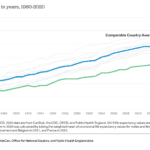The United States is currently facing an unprecedented public health crisis driven by the rise of a highly potent synthetic opioid known as fentanyl. This drug, which is 50-100 times more powerful than morphine, has become a significant driver of the ongoing overdose epidemic, contributing to tens of thousands of preventable deaths each year.
The Origins of Fentanyl
Fentanyl was first synthesized in 1959 by the Belgian chemist Paul Janssen as a powerful pain medication. It was initially intended for use in anesthesia and the management of severe, chronic pain in cancer patients. However, the drug’s intense euphoric effects and high potency soon led to its diversion and abuse.
In the 1970s and 1980s, illicit fentanyl began appearing on the black market, often disguised as or mixed with heroin. This trend continued through the 1990s and 2000s, with fentanyl-related overdoses steadily increasing. But it was in the 2010s that the fentanyl crisis truly exploded, driven by the large-scale manufacturing of the drug in clandestine labs, primarily in China and Mexico.
The rise of fentanyl can be attributed to several factors. First, the drug’s potency makes it an attractive proposition for drug traffickers and dealers. A small amount of fentanyl can be used to “cut” or adulterate much larger quantities of other drugs, increasing profits without significantly adding to the volume or weight. This has led to fentanyl being increasingly mixed with heroin, cocaine, and methamphetamine and even pressed into counterfeit prescription pills.
Secondly, the relative ease of manufacturing fentanyl compared to other opioids has contributed to its proliferation. The precursor chemicals needed to produce fentanyl are relatively simple to obtain, and the synthesis process is well-documented. This has allowed for the rapid expansion of illicit fentanyl production, particularly in countries with lax regulations and enforcement.
The Deadly Potency of Fentanyl
The primary reason fentanyl has become such a deadly threat is its extreme potency. As mentioned, fentanyl is 50-100 times more potent than morphine, and even a tiny amount can be fatal. This high potency is what makes fentanyl so appealing to drug dealers and users, but it also makes the drug incredibly dangerous.
When fentanyl is mixed with other drugs, users may be unaware of the presence of the synthetic opioid, putting them at risk of accidental overdose. Even experienced opioid users can underestimate the strength of fentanyl-laced drugs, leading to respiratory depression and death. The Centers for Disease Control and Prevention (CDC) has reported that fentanyl is now the leading cause of overdose deaths in the United States, surpassing even heroin and prescription opioids.
The symptoms of a fentanyl overdose can include drowsiness, confusion, nausea, constricted pupils, and, most critically, slowed or stopped breathing. This respiratory depression is the primary cause of death from fentanyl overdose. Naloxone, an opioid overdose reversal medication, can temporarily counteract these effects, but multiple doses may be required due to fentanyl’s strength.
The Devastating Impact of the Fentanyl Crisis
The rise of fentanyl has had a devastating impact on communities across the United States. In 2021, over 107,000 people died from drug overdoses, with the majority of these deaths involving synthetic opioids like fentanyl. This represents a staggering 15% increase in overdose deaths compared to the previous year.
The fentanyl crisis has disproportionately affected specific demographics, with young adults and racial/ethnic minorities being particularly hard hit. Between 2019 and 2020, overdose death rates increased by 44% among Black individuals and 39% among Hispanic individuals, compared to a 22% increase among white individuals. This disparity highlights the need for targeted, community-based interventions to address the underlying social and economic factors that contribute to substance use and overdose.
The impact of the fentanyl crisis extends beyond the direct loss of life. The devastating effects of addiction and overdose have torn apart families and communities. Children have lost parents, siblings have lost brothers and sisters, and the ripple effects of these tragedies can be felt for generations. The emotional and financial toll on individuals, families, and society is immeasurable.
Addressing the Fentanyl Crisis
Addressing the fentanyl crisis will require a multifaceted approach that combines law enforcement, public health, and harm reduction strategies. Some critical elements of this approach include:
Expanding Access to Evidence-Based Addiction Treatment
Increasing access to evidence-based addiction treatment, such as medication-assisted treatment (MAT) and behavioral therapies, is crucial to helping individuals with opioid use disorder achieve and maintain recovery. However, significant barriers to treatment access must be addressed, including cost, stigma, and geographic availability.
Distributing Naloxone More Widely
Naloxone, an opioid overdose reversal medication, is a critical tool in the fight against fentanyl-related overdoses. Ensuring that naloxone is readily available and accessible to first responders, community organizations, and the general public can help save lives in the event of an overdose.
Implementing Harm Reduction Strategies
Harm reduction approaches, such as supervised consumption sites, drug testing services, and safe disposal programs, can help mitigate the risks associated with fentanyl use. These strategies aim to reduce the harms of drug use without necessarily requiring abstinence and be effective in preventing overdoses and connecting individuals to treatment.
Disrupting the Illicit Drug Supply
Law enforcement efforts to disrupt the production and trafficking of illicit fentanyl, both domestically and internationally, are essential to stemming the flow of this deadly drug. This includes targeting the source countries, supply chains, and distribution networks that fuel the fentanyl crisis.
Educating the Public
Comprehensive public education campaigns can help raise awareness about the dangers of fentanyl, the signs of an overdose, and the availability of life-saving interventions like naloxone. This information can empower individuals and communities to take action and save lives.
Conclusion
The fentanyl crisis has become one of the most pressing public health challenges facing the United States. The drug’s extreme potency, widespread availability, and deadly consequences have led to a staggering increase in overdose deaths, devastating individuals, families, and communities across the country.
Addressing this crisis will require a coordinated, multi-pronged approach that combines evidence-based treatment, harm reduction strategies, law enforcement efforts, and public education. By working together to expand access to addiction services, distribute naloxone more widely, and disrupt the illicit drug supply, we can save lives and begin to turn the tide on this devastating epidemic.
The time for action is now. With a comprehensive, compassionate, and evidence-based response, we can work to prevent further loss of life and help those struggling with opioid use disorder find a path to recovery and wellness.
https://www.dea.gov/factsheets/fentanyl https://www.ncbi.nlm.nih.gov/pmc/articles/PMC6141620/
https://www.umassmed.edu/news/news-archives/2022/05/what-is-fentanyl-and-why-is-it-behind-the-deadly-surge-in-us-drug-overdoses/
https://www.ncbi.nlm.nih.gov/pmc/articles/PMC5577861/
https://www.cdc.gov/drugoverdose/data/index.html https://myhealth.alberta.ca/Alberta/Pages/fentanyl-frequently-asked-questions.aspx https://nida.nih.gov/publications/drugfacts/fentanyl https://www.cdc.gov/nchs/nvss/vsrr/drug-overdose-data.htm https://www.cdc.gov/mmwr/volumes/71/wr/mm7129e2.htm








